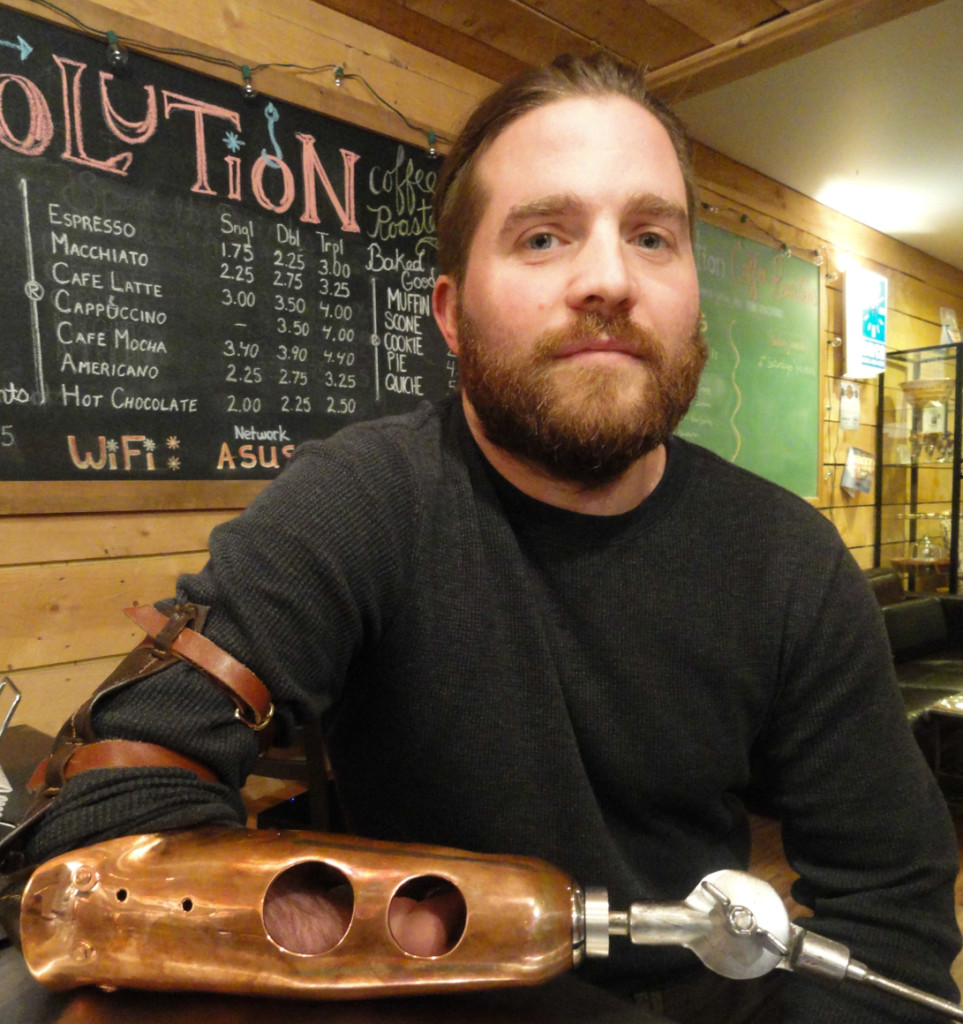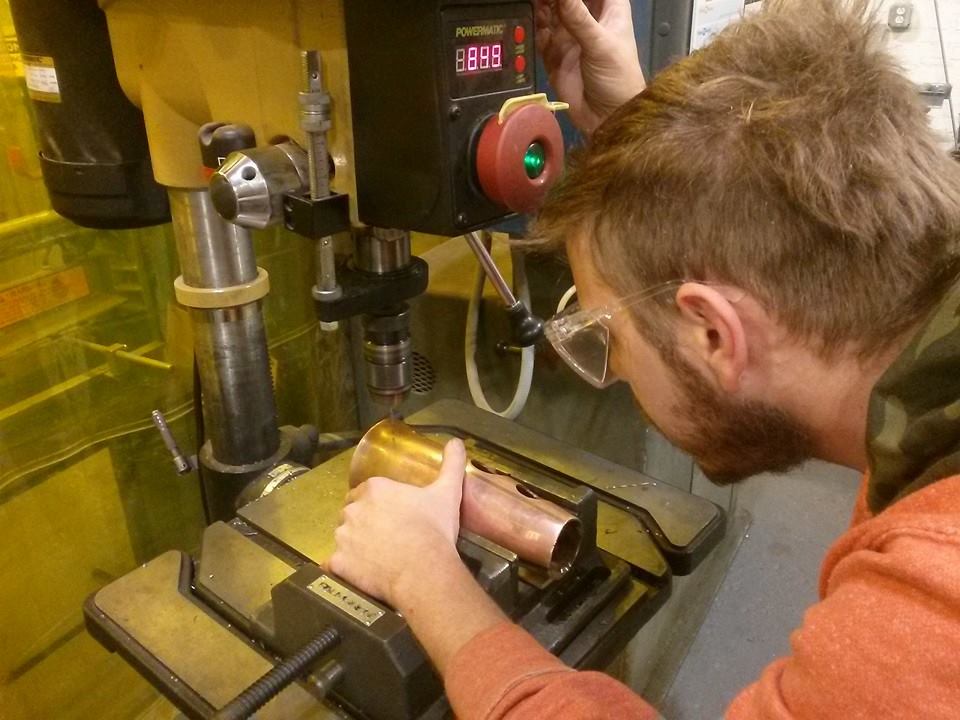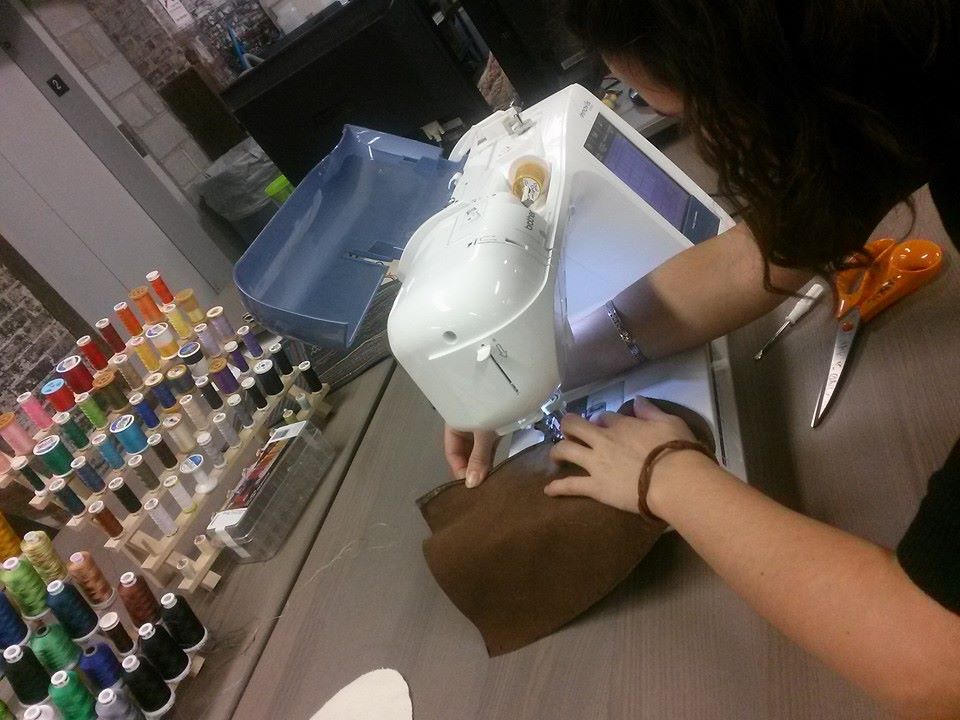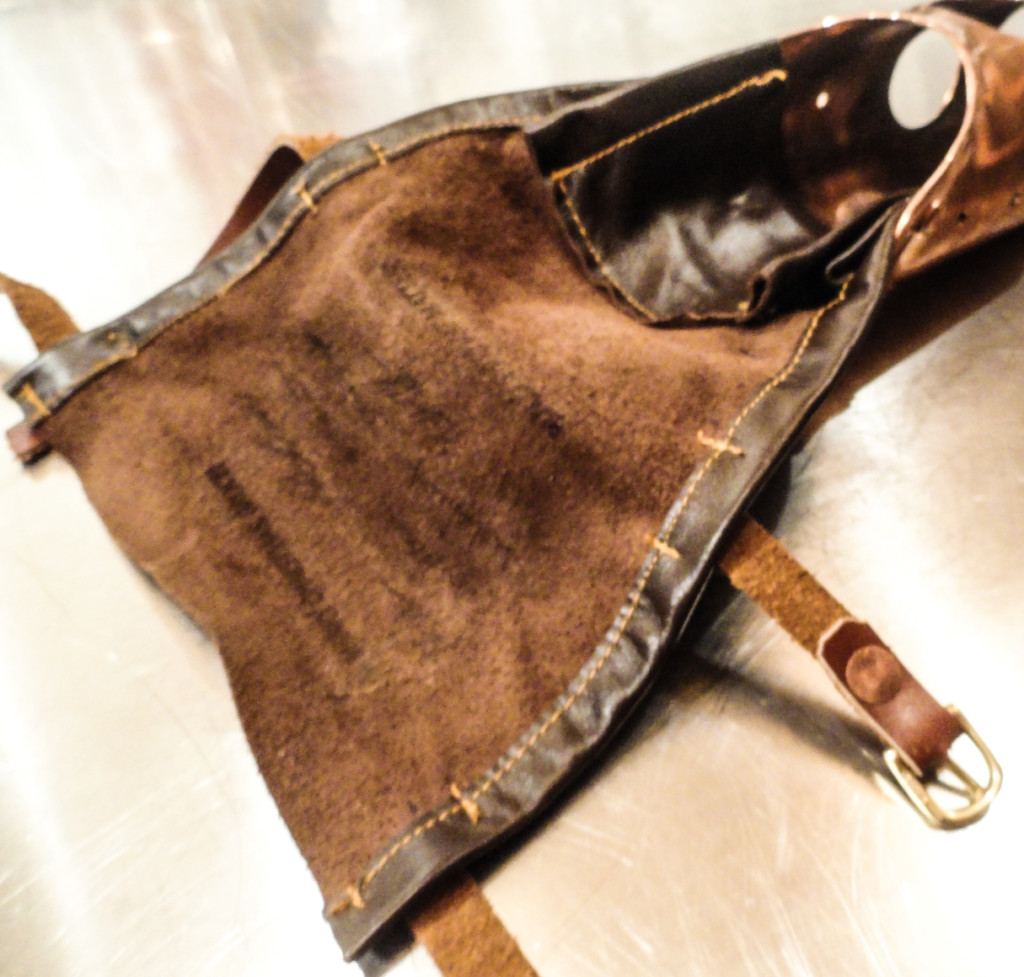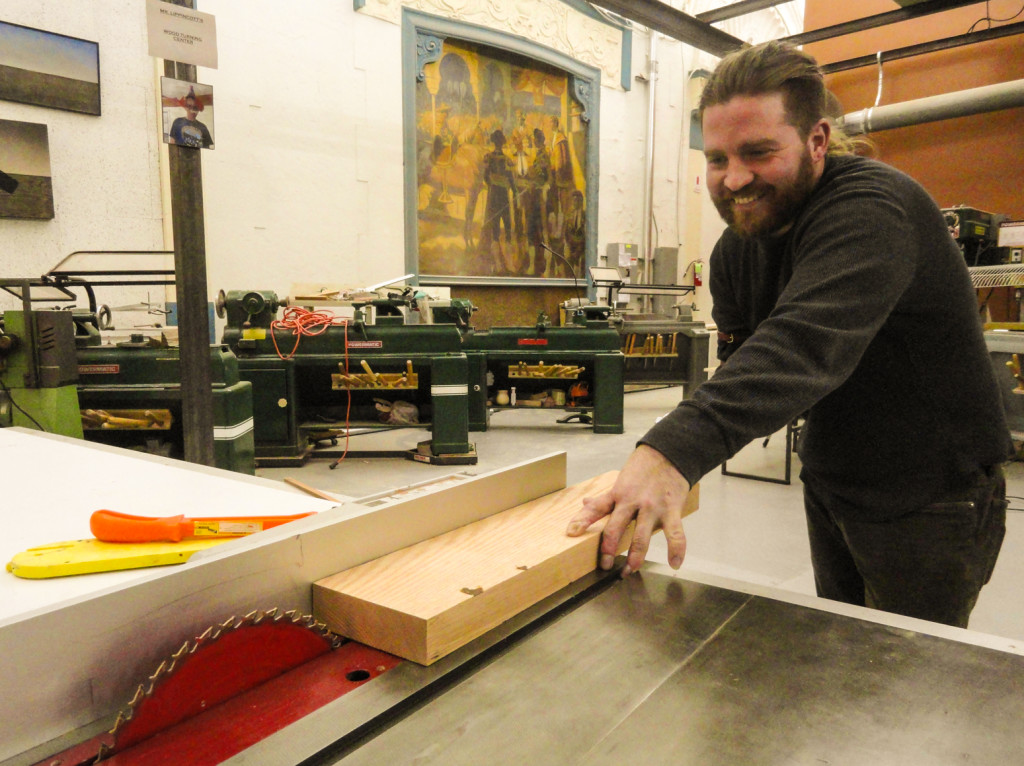Craftsmen from two area makerspaces joined forces to help someone they’d never met complete a personal project.
By Matt Skoufalos
Woodworker Bruce Faulseit has built a number of things, from cutting boards to a backyard greenhouse in his Collingswood home.
But until a few weeks ago, the one project he’d been unable to complete might be the one that’s most important to him.
Over the summer, Faulseit, who doesn’t have the use of his right hand, began fabricating a prosthetic arm from a cut piece of copper pipe at The Factory in Collingswood.
He envisioned adding a universal, quick-release fitting to its wrist that would allow him to switch among a number of specialized woodworking attachments in the shop.
But in short order, Faulseit said he hit the wall of his technical expertise.
“I knew exactly what I wanted; I just didn’t have the ability to machine the stuff,” he said. “I shelved it, and I kind of stopped thinking about it.”
The project was revived, however, when another woodworker he knew, Collingswood-based luthier Peter Brown, met artist Kaitlyn Debiasse at another makerspace, NextFab studios in Philadelphia.
Brown was walking Debiasse through some 3-D modeling software that she wanted to use to make printable prosthetic limbs.
As they talked, it dawned on Brown that he knew the perfect candidate to help test out her designs.
Faulseit had been looking for assistance from other makers who knew how to operate the computer-guided machining tools that could help him complete the fittings for his arm.
When he brought his prototype to Brown on December 8, Brown decided the arm would have to be done by Christmas.
He called it his “Santa project,” but at its core, the task perfectly embodied the philosophy of coworking in the maker spirit.
“I got the idea of what he wanted to do, and then I figured out who I needed to talk to to get it done,” Brown said.
“People just started coming out and trying to help out with it.”
Industrial designer Christine Zapata made a leather strap for the prosthetic to attach to Faulseit’s upper arm.
NextFab Metals Process Manager Matt Watson made the bayonet fitting for the prosthetic, which housed the universal adapter Faulseit and Brown designed with 3D modeling software.
When he caught wind of the project through a Facebook post, fabricator Mike Hosier offered to polish the arm, “and he made the thing [shine] like a mirror,” Brown said.
As a finishing touch, Faulseit asked everyone who helped bring his design to life sign it.
Zapata was getting ready to laser-etch their signatures into the leather, but felt it would be incomplete without a message, Brown recalls.
They settled on: “Merry Christmas, Bruce. Build s–t that matters.”
“It was really a touching thing that everybody stepped up and did what they did,” Faulseit said. “People came together, and I didn’t know any of them, either.
“The reason why I think they wanted to do it was [they wondered] ‘If we help him make this, what is he really capable of?’”
“It’s a bunch of makers making stuff for another maker to make stuff,” Brown said. “It was actually the first project where I had coworked with people, at least to such a higher level.
“The best thing about it was in doing it, you really got to see the good of a lot of people for no other reason than they wanted to,” he said.
“It restores your faith in humans.”
As great a gift as the arm has been, it’s still incomplete. Faulseit has plans for a number of attachments that will make woodworking easier for him—a push stick, a hammer, a saw—as well as other novelties. Someday he hopes to realize his dream hobby of bartendending.
“A pint glass holder,” Faulseit said. “Multi shot-glass holder. Double rocks holder, and a knife for cutting limes and other bar fruit. There will be a bottle opener attached to the bottom of it, eventually.”
Specialized attachments like these haven’t been created yet, but with the arrival of some brass stock to be used in their fabrication, Brown said he expects the process won’t be far off.
“I named it the ‘go-go-gadget arm’ because we’re going to make him a tool belt, and he can just pull off any attachment that he needs at the moment,” Brown said.
Once the arm is fitted correctly and Faulseit can use it day to day, “It’ll just make my life a lot easier in the shop,” he said.
“Running some of these tools is kind of dangerous,” Faulseit said. “Having one hand, I’m already behind the eight ball. I can take a lot of the risk out of being a woodworker.
“I don’t know if it’s going to change anything as far as what I design or build, but it’s going to make my life easier.
“I really want to be able to use [the arm],” he said. “That’s why I wanted to do it in the first place.”


